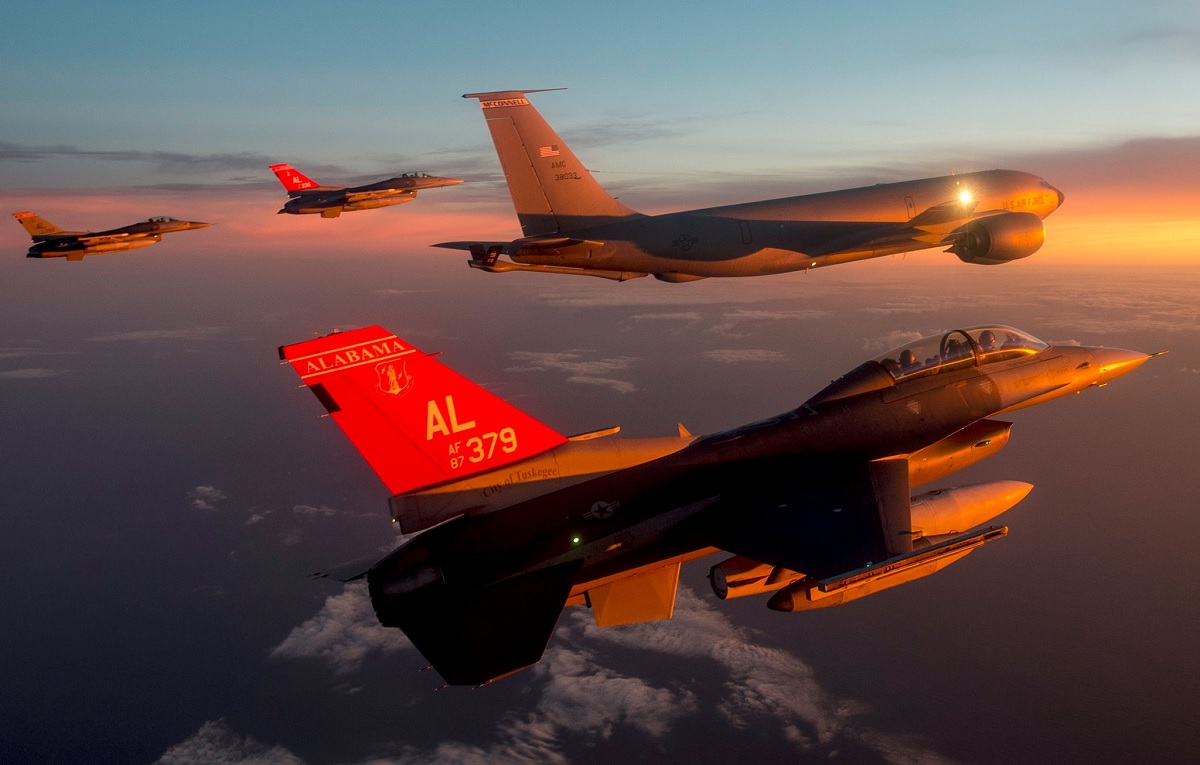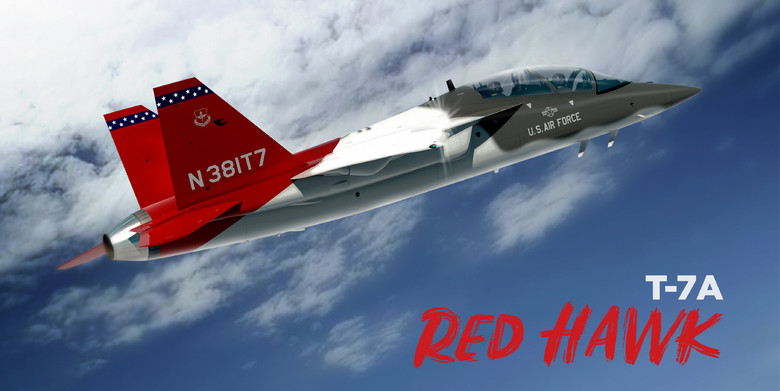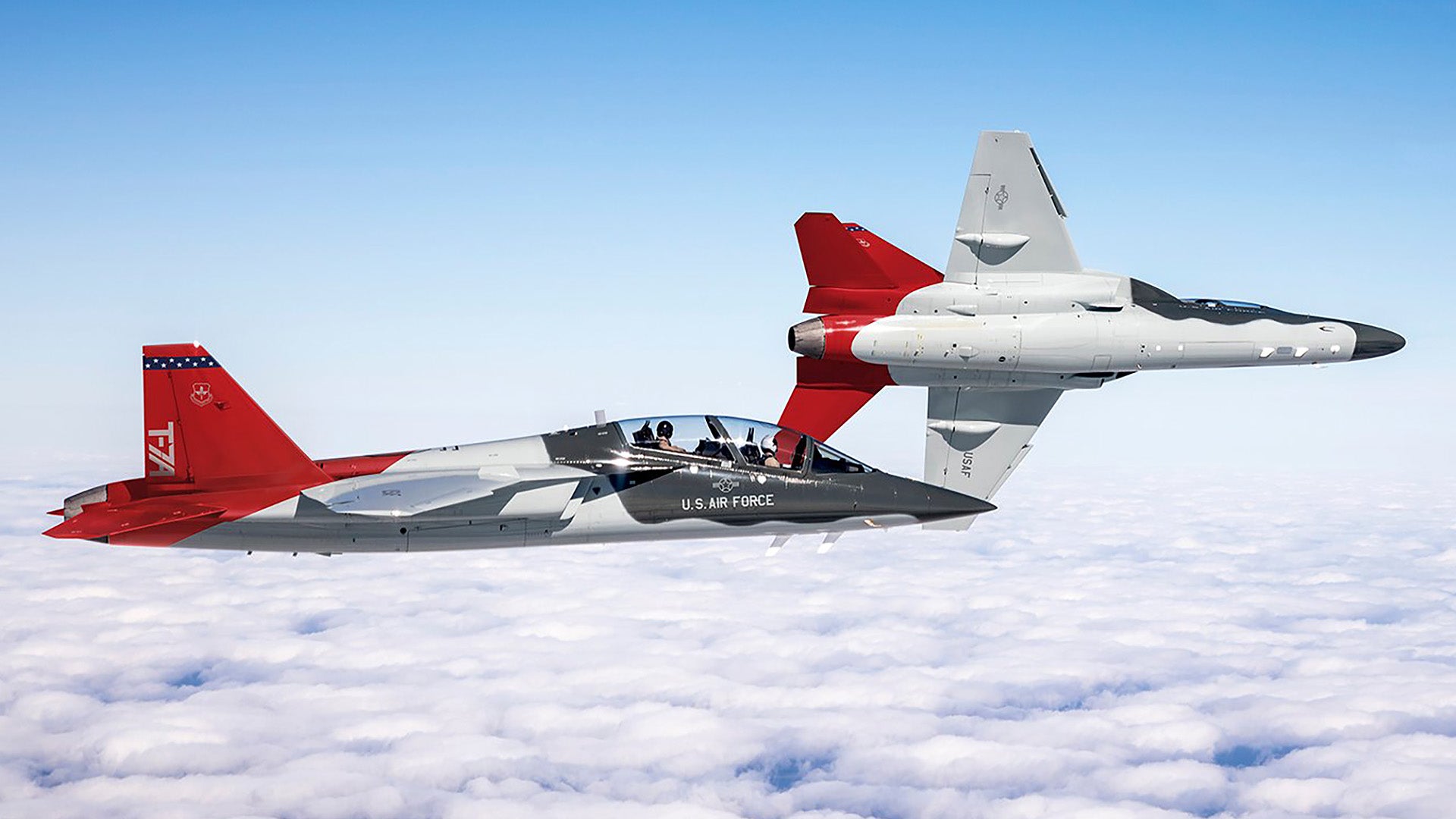The United States Air Force has just disclosed its official name and designation for its new jet trainer—the T-7A “Red Hawk.”
The announcement came at the Air Force Association’s symposium that opened today outside of Washington, D.C. Acting Air Force Secretary Matt Donovan disclosed the jet’s official moniker while standing with one of the legendary Tuskegee Airmen, Colonel Charles McGee—a highly decorated veteran with a whopping 409 combat missions spread across WWII, Korea, and Vietnam—by his side.
McGee and his Red Hawk squadronmates not only bombed and strafed the Nazis with amazing acumen, they also did the same to racial biases and the artificial limitations placed on African Americans’ service. The unit was known for their bright red tail flashes on their P-47 Thunderbolts and P-51 Mustangs, a tradition that still continues with the unit that bears the name “Red Tails” to this very day.

Donovon stated:
“The name Red Hawk honors the legacy of Tuskegee Airmen and pays homage to their signature red-tailed aircraft from World War II… The name is also a tribute to the Curtiss P-40 Warhawk, an American fighter aircraft that first flew in 1938 and was flown by the 99th Fighter Squadron, the U.S. Army Air Forces’ first African American fighter squadron.
…
The T-7A will be the staple of a new generation of aircraft… The Red Hawk offers advanced capabilities for training tomorrow’s pilots on data links, simulated radar, smart weapons, defensive management systems, as well as synthetic training capabilities.”
I can’t think of a better name for the clean-sheet trainer design that will build much of the force’s future pilot cadre.

The T-7 is being built by Boeing with their help of their Swedish partners on the program—SAAB.
Boeing won the T-X contract a year ago in the face of stiff competition. The win was much more than a realized opportunity to build 351 trainers to replace the flying force’s venerable T-38 Talons—and possibly many more of the jets for foreign air arms and to fill additional roles within the Pentagon’s air combat portfolio—it was a lifeline to Boeing’s St. Louis tactical aircraft production facility and more. You can read all about what this win meant for Boeing in this past editorial feature of mine.
Boeing’s two T-X—or should I say T-7—prototypes just made their combined 100th flight and the program is accelerating.
USAF Chief of Staff General David Goldfein said the following about the T-7 at the symposium:
“The distance between the T-38 and an F-35 is night and day… But with the T-7A the distance is much, much smaller, and that’s important because it means the pilots trained on it will be that much better, that much faster at a time when we must be able to train to the speed of the threat.”
It’s worth noting that another T-7 does exist internationally. Japan’s basic flight training aircraft, the Fuji T-7.
Callbacks to the USAF’s WWII heritage have become almost standardized in new aircraft naming convention. The force’s next stealth bomber was named the Raider after the Doolittle Raiders that were the first to respond to the attacks on Pearl Harbor with an offensive strike. Before that, the force’s skipped forward in its rebooted trainer designation sequence to name its new primary trainer the T-6 Texan II after the North American T-6 Texan of WWII fame.

Regardless, here’s to the new T-7 Red Hawk, hopefully, the airplane will prove worthy of its new name in the decades to come.
Contact the author: Tyler@thedrive.com
